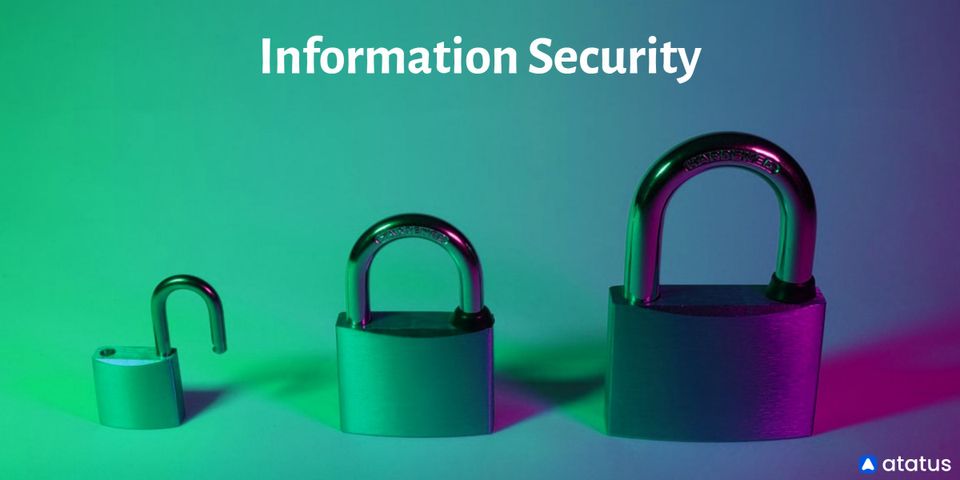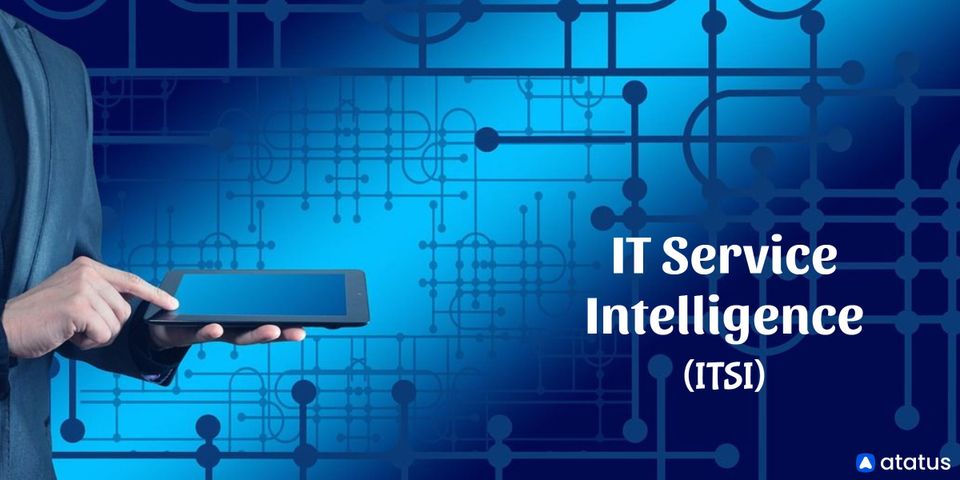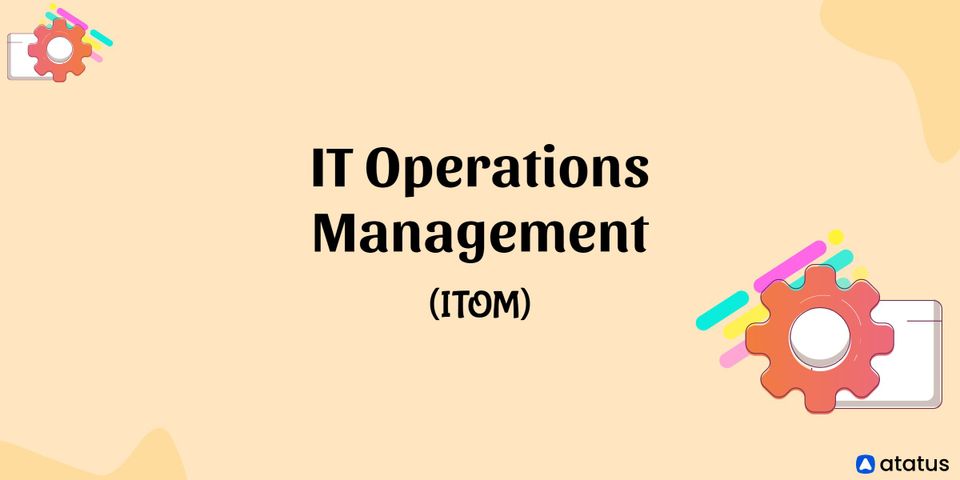Information might be in the form of a physical object or an electronic file. Information can be anything from your personal information to your social media profile, cell phone data, biometrics, and so on. As a result, Information Security encompasses a wide range of academic topics, including cryptography, mobile computing, cyber forensics, and online social media, among others.
We will cover the following:
- What is Information Security?
- Principles of Information Security
- Types of Information Security
- Technologies for Information Security
What is Information Security?
The practice, policies, and principles used to protect digital data and other types of information are referred to as Information Security or Infosec. One of the Infosec's roles is to establish a set of business procedures to safeguard information assets, regardless of how that information is represented or whether it is in transit, being processed, or being stored at rest.
Infrastructure and network security, auditing, and testing are all included under the umbrella of InfoSec. Unauthorized users are prevented from accessing confidential information using methods such as authentication and permissions. These safeguards assist you to avoid the risks of data theft, modification, or loss.
In a nutshell, information security is how you ensure that your employees have access to the data they require while preventing others from doing so. It's also linked to risk management and regulatory requirements.
Principles of Information Security
The overall purpose of information security is to keep the bad men out while allowing the good guys in. Confidentiality, integrity, and availability are the three main tenants that underpin this. The three pillars or principles of information security are known as the CIA triad.

- Confidentiality
It means that information is not shared with unauthorized people, organizations, or processes. For example, let's imagine I had a password for my Gmail account that was spotted by someone while I was attempting to get in. In that situation, my password has been stolen and my privacy has been violated. - Integrity
It entails ensuring data accuracy and completeness. This means that data cannot be altered without permission. If an employee quits an organization, for example, data for that employee in all departments, such as accounts, should be updated to reflect the individual's status as JOB LEFT so that data is comprehensive and accurate, and only authorized people should be permitted to alter employee data. - Availability
It implies that information must be available at all times. For example, if you need to access information on a specific employee to see if they've exceeded their leave limit, you'll need the help of various organizational teams like development operations, incident response, network operations, and policy/change management.
These three principles are not mutually exclusive; they inform and influence one another. As a result, any information security system will require a balance of these variables. Information solely available as a written piece of paper housed in a vault, for example, is confidential but not immediately accessible. The information carved into stone in the lobby has a high level of integrity, but it is neither confidential nor available.
Types of Information Security
When it comes to information security, there are numerous kinds to be aware of. Specific forms of information, technologies for protecting information, and domains where information has to be protected are all covered by these subtypes.
- Application Security
Applications and application programming interfaces (APIs) are protected by application security solutions. These techniques can be used to avoid, detect, and fix bugs and other vulnerabilities in your applications. If your application and API vulnerabilities aren't patched, they can give a backdoor into your broader systems, putting your data in danger. Specialized tools for application shielding, scanning, and testing make up a large part of application security. - Cloud Security
Cloud security protects cloud or cloud-connected components and information in the same way as application and infrastructure security does. Cloud security focuses on the risks that arise from Internet-facing services and shared environments, such as public clouds, by providing additional protections and solutions. A focus on centralizing security administration and tooling is also common. Security teams can maintain visibility of information and threats across distributed resources due to this centralization. - Cryptography
Cryptography protects data by disguising its contents through the use of encryption. When data is encrypted, only users with the relevant encryption key have access to it. The information is unintelligible if users do not have this key. Security teams can utilize encryption to protect the confidentiality and integrity of data throughout its life cycle, including during storage and transit. Once a user decrypts the data, however, it becomes vulnerable to theft, disclosure, and manipulation. - Disaster Recovery
Unexpected events might cause your company to lose money or suffer damage, thus disaster recovery plans are essential. Ransomware, natural disasters, and single points of failure are just a few examples. The recovery of information, the restoration of systems, and the resumption of operations are all part of most disaster recovery plans. These tactics are frequently included in a business continuity management (BCM) plan, which is aimed to help organizations sustain operations with the least amount of downtime possible. - Incident Response
A combination of protocols and techniques for identifying, investigating, and responding to threats or destructive occurrences is known as incident response. It prevents or minimizes system damage caused by attacks, natural disasters, system failures, or human mistakes. Any harm to information, such as loss or theft, is included in this damage. An incident response plan (IRP) is a regularly used tool for incident response. - Infrastructure Security
Networks, servers, client devices, mobile devices, and data centers are among the infrastructure components that are protected by infrastructure security techniques. Without sufficient protection, the increased interconnectedness between these and other infrastructure components puts information at risk. - Vulnerability Management
Vulnerability management is a technique for lowering an application's or system's inherent hazards. The goal of this method is to find and fix vulnerabilities before they are exposed or exploited. Your information and resources will be more secure if a component or system has fewer vulnerabilities. To detect flaws, vulnerability management approaches rely on testing, auditing, and scanning.
Technologies for Information Security
Adopting a mix of techniques and technologies is required to develop an effective information security strategy. The following technologies are used in the majority of strategies.
- Blockchain Cybersecurity
Blockchain is a type of cybersecurity that is based on immutable transactional events. Distributed networks of users check the legitimacy of transactions and ensure that their integrity is preserved in blockchain technologies. While these technologies are still in their infancy, several businesses are beginning to incorporate them into their products. - Cloud Security Posture Management (CSPM)
CSPM is a set of methods and techniques that you can use to assess the security of your cloud resources. These tools let you scan setups, compare protections to benchmarks, and make sure security policies are executed consistently. CSPM solutions frequently include remediation advice or guidelines that you may employ to improve your security posture. - Data Loss Prevention (DLP)
Tools and techniques that protect data from loss or modification are included in DLP strategies. This includes categorizing data, backing it up, and keeping track of how it is transferred within and outside the company. You can use DLP systems to check outgoing emails, for example, to see if sensitive information is being shared inappropriately. - Endpoint Detection and Response (EDR)
Endpoint activity can be monitored, suspicious activity can be identified, and threats can be automatically responded to with EDR cybersecurity solutions. These solutions are designed to improve endpoint device visibility and can be used to keep threats out of your network and information out of your hands. Continuous endpoint data collecting, detection engines, and event logging are all used in EDR solutions. - Firewalls
Firewalls are an additional layer of security that can be applied to networks or applications. You can use these tools to filter traffic and report data to traffic monitoring and detection systems. Firewalls frequently use pre-defined lists of acceptable and unapproved traffic, as well as regulations that determine the rate and volume of traffic that is permitted. - Intrusion Detection System (IDS)
IDS solutions are tools for monitoring and detecting threats in incoming traffic. These technologies analyze communications and send out alerts if anything looks suspicious or dangerous. - Intrusion Prevention System (IPS)
IDS and IPS security solutions are comparable, and the two are frequently used together. These solutions respond to suspicious or malicious traffic by blocking requests or terminating user sessions. IPS solutions can be used to regulate network traffic according to security policies. - Security Incident and Event Management (SIEM)
SIEM solutions allow you to collect and correlate data from a variety of sources. This data aggregation allows teams to more efficiently spot threats, manage warnings, and provide better context for investigations. SIEM solutions are also beneficial for logging system events and reporting on performance and events. This data can then be used to demonstrate compliance or optimize configurations. - User Behavioral Analytics (UBA)
UBA solutions collect data on user activities and correlate them to create a baseline. The baseline is then used as a comparison against new behaviors to find inconsistencies. These inconsistencies are then flagged as potential threats by the solution. UBA systems, for example, can be used to monitor user activities and detect if a person begins exporting huge volumes of data, signaling an insider threat.
Conclusion
Information security is implemented by businesses for a variety of reasons. The confidentiality, integrity, and availability of company data are usually the key aims of InfoSec. Since InfoSec is so broad, it frequently necessitates the installation of multiple forms of security, such as application security, infrastructure security, encryption, incident response, vulnerability management, and disaster recovery.
Monitor Your Entire Application with Atatus
Atatus provides a set of performance measurement tools to monitor and improve the performance of your frontend, backends, logs and infrastructure applications in real-time. Our platform can capture millions of performance data points from your applications, allowing you to quickly resolve issues and ensure digital customer experiences.

Atatus can be beneficial to your business, which provides a comprehensive view of your application, including how it works, where performance bottlenecks exist, which users are most impacted, and which errors break your code for your frontend, backend, and infrastructure.





